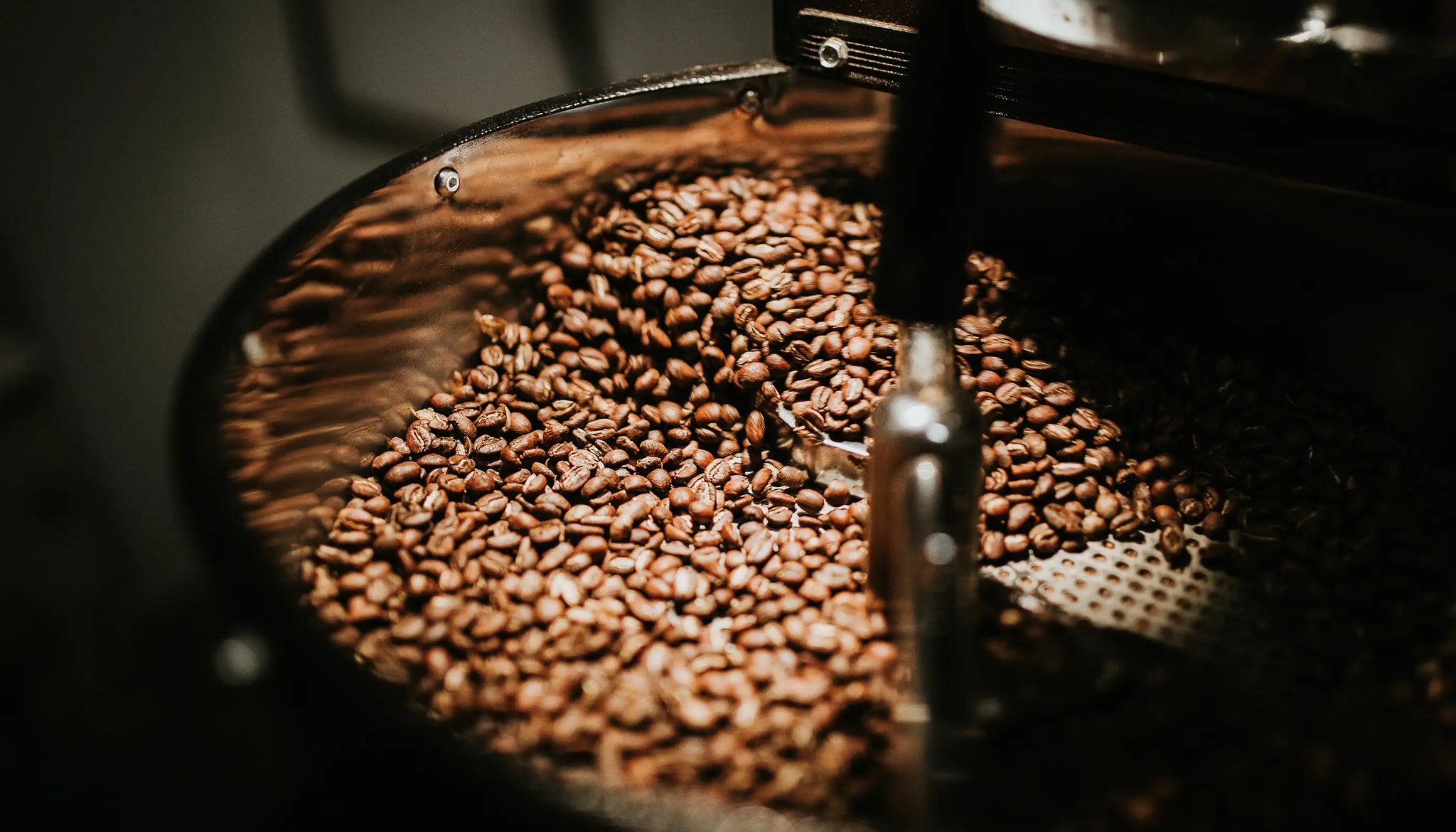Discovering the Abundant Flavors of Coffee Beans: a Deep Dive Into Coffee and Blended Coffee Beans
When you discover the rich flavors of coffee beans, you discover an intricate world where each selection brings its own personality to your cup. Comprehending the beginnings, refining techniques, and toasting techniques can change your coffee experience. As you navigate with the art of espresso and the creative thinking behind mixed coffees, you'll begin to appreciate the nuances that make each sip unique. What you'll discover next might transform the method you appreciate your early morning brew.
The Beginnings of Coffee Beans: Checking Out Terroir and Flavor Profiles
When you take a sip of coffee, you're not just delighting in a drink; you're experiencing a rich tapestry of flavors shaped by the beans' beginnings. Each region produces unique flavor accounts affected by altitude, environment, and soil. For example, beans from Ethiopia frequently break with brilliant, fruity notes, while those from Colombia tend to use a balanced, nutty sweet taste.
As you explore various beginnings, you'll discover how terroir-- the environmental factors influencing a crop-- plays an important duty - Single Origin Espresso. The same coffee selection can taste substantially various depending upon where it's expanded
When you consider these variables, you start to appreciate the intricacy behind your mug. Each sip tells a tale of the land and the farmers who nurtured the beans. So, next time you delight, assume about the journey your coffee took prior to it reached your hands, and appreciate those intricate tastes that show its beginning.
Understanding Espresso: The Art and Science Behind the Brew
When you think of coffee, it's not nearly the strong flavor; it's additionally concerning the strategies that bring it to life. Recognizing exactly how different preparation methods influence preference can transform your brewing experience. Allow's discover the details of coffee preparation and uncover the unique taste accounts that make each cup unique.
Coffee Prep Work Techniques
Espresso prep work is both a science and an art, integrating exact methods with a deep understanding of coffee. To start, you'll wish to select top notch, newly roasted beans and grind them finely for perfect extraction (Single Origin Espresso). The grind dimension is vital; also crude, and your coffee will certainly be weak, too fine, and it'll be bitter
Next, tamp the premises uniformly in the portafilter to assure consistent removal. When you secure it right into the maker, go for a developing temperature level in between 190 ° F and 205 °
F.As you draw the shot, expect the excellent extraction time-- around 25-30 secs. The outcome needs to be an abundant, luscious coffee with a beautiful layer of crema on top. With practice, you'll understand these techniques.
Flavor Profiles Explained
The world of coffee provides a rich tapestry of flavor accounts that can boost your coffee experience. You'll see a balance of level of acidity, resentment, and sweet taste when you take that very first sip. Each coffee bean lugs special notes, from fruity and floral to nutty and chocolaty. Light roasts often display brilliant level of acidity and lively flavors, while dark roasts existing much deeper, bolder tones.
A well-crafted blend may integrate the brilliant notes of an Ethiopian bean with the rich, chocolatey touches of a Brazilian bean. Embrace the journey of discovering espresso's varied flavors, and you'll change your coffee ritual right into an amazing experience.
Handling Techniques: How They Impact Taste and Scent
While it could appear that the beginning of coffee beans is the most significant element in determining their taste and fragrance, the processing approaches made use of post-harvest play a just as necessary duty. You'll locate that these approaches can substantially modify the final preference account of your cup.
As an example, the washed process gets rid of the fruit from the beans prior to fermentation, usually resulting in a cleaner, brighter flavor. The all-natural procedure leaves the fruit undamaged throughout drying out, resulting in a sweeter, fruitier account.
Various other techniques, like honey handling, strike an equilibrium, allowing some fruit mucilage to remain, providing an unique complexity.
Each handling strategy communicates with the beans' integral characteristics, enhancing or muting details flavors and fragrances. When you drink that espresso or blended coffee, keep in mind that the trip from cherry to mug is affected not simply by origin but also by how those beans were refined.
Roasting Methods: Opening the Full Possible of Coffee Beans
Roasting strategies are essential for exposing the complete possibility of coffee beans, as they change raw, click for source environment-friendly beans into the fragrant, savory coffee you appreciate. The selection of roasting approach-- light, medium, or dark-- dramatically affects flavor profiles. Light roasts protect the beans' natural acidity and fruity notes, while medium roasts balance sweet taste and richness. Dark roasts, on the other hand, emphasize strong, smoky flavors.
A slower roast at lower temperatures permits for intricate tastes to develop, while a quicker roast can intensify anger. By understanding these techniques, you'll expose a world of flavor, raising your coffee experience to brand-new elevations.
The Magic of Blended Coffee: Producing Special Taste Experiences
Developing an one-of-a-kind taste experience with blended coffee can change your early morning ritual into an expedition of preference. By integrating different beans from various areas, you can reveal a harmony of tastes that elevate your cup to brand-new heights. Each mix deals a distinct profile, balancing body, acidity, and sweetness to develop something absolutely special.
When you choose a blend, you're not simply selecting a coffee; you're selecting a journey throughout varied landscapes and cultures. Trying out various combinations allows you to discover your personal favorites, whether you take pleasure in fruity notes or abundant, chocolatey undertones.

Sampling Notes: Acknowledging the Nuances in Your Cup
As you sip your coffee, you may see a spectrum of flavors dancing on your taste buds, each disclosing the intricacies of the beans. You may taste the intense level of acidity reminiscent of citrus or the deep, abundant notes comparable to dark delicious chocolate. The sweetness could evoke honey or sugar, stabilizing the general profile wonderfully.
Pay attention to the body of the coffee-- does it really feel airy and light, or is it complete and luscious? The coating, too, provides ideas; a lingering aftertaste may mean nuttiness or flower undertones.

Don't forget to explore the distinct characteristics of different origins, as each area imparts unique tastes - Single Origin Espresso. Ethiopian coffees commonly existing fruity notes, while Colombian beans might display a more rounded sweetness. By acknowledging these subtleties, you'll deepen your recognition for each and every mug, boosting your coffee experience to brand-new heights

Developing Techniques: Taking Full Advantage Of Flavor Removal for every single Bean
When you discover the numerous developing techniques, you'll find that each strategy can significantly impact the taste account of your coffee. From French press to pour-over, each approach extracts various compounds, improving or muting particular notes. As an example, making use of a French press permits oils to continue to be in the brew, creating a richer preference, while pour-over highlights quality and illumination.
Temperature and grind dimension additionally play important roles. see it here A coarser grind works best for cold mixtures, while a great work is optimal for coffee. Trying out water temperature-- in between 195 ° F and 205 ° F-- can disclose concealed flavors, as well.
Do not ignore soaking time; a fast extraction can cause sour notes, while over-extraction might yield anger. By adjusting these variables, you can make the most of taste extraction and truly raise your coffee experience. Take pleasure in the journey of uncovering what technique best suits your taste!
Regularly Asked Concerns
What Is the Ideal Water Temperature Level for Developing Coffee?
The ideal water temperature level for developing coffee's in between 195 ° F and 205 ° F. If you make use of water that's too warm, you'll over-extract flavors; as well chilly, and you won't my blog draw out sufficient. Purpose for that sweet spot for the best mixture!
How Does Grind Dimension Affect Coffee Flavor?
Work dimension significantly affects coffee taste. Finer grinds remove a lot more flavors and oils, causing a bolder preference, while coarser grinds return a lighter flavor. Changing work dimension aids you accomplish your wanted coffee account.
Are There Wellness Perks Linked With Alcohol Consumption Coffee?

What Is the Difference In Between Arabica and Robusta Beans?
Arabica beans are smoother and sweeter, often including fruity tastes, while robusta beans are stronger with a bitter taste and greater high levels of caffeine material. You'll discover these differences in aroma and developing experience.
Exactly How Can I Store Coffee Beans for Freshness?
To save coffee beans for quality, keep them in an airtight container, far from moisture, light, and warmth. If you just grind what you require right before developing., you'll preserve their taste much longer.
Checking Out the Rich Tastes of Coffee Beans: a Deep Dive Into Espresso and Blended Coffee Beans.
When you explore the abundant tastes of coffee beans, you discover a complex globe where each range brings its own personality to your mug.When you take a sip of coffee, you're not just appreciating a beverage; you're experiencing a rich tapestry of tastes formed by the beans' origins.Roasting strategies are important for exposing the complete capacity of coffee beans, as they transform raw, eco-friendly beans into the fragrant, flavorful coffee you appreciate.As you drink your coffee, you might see a spectrum of tastes dancing on your taste buds, each revealing the intricacies of the beans.